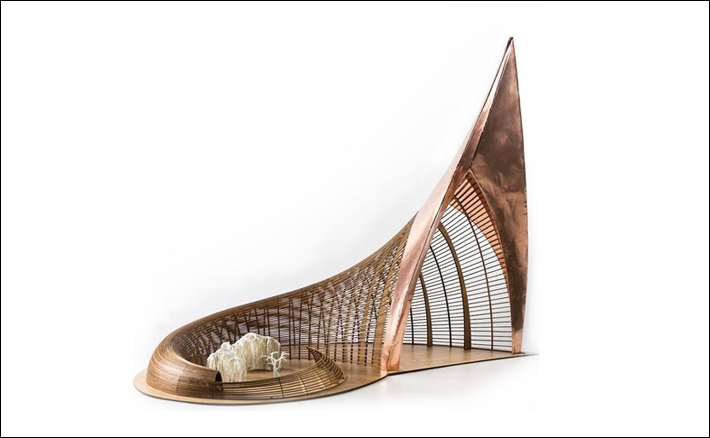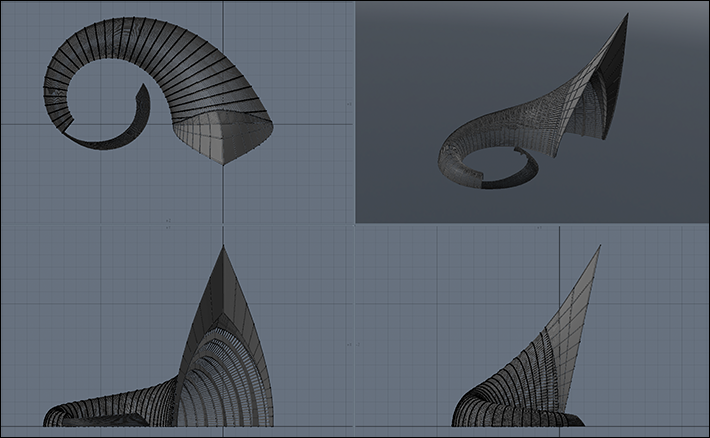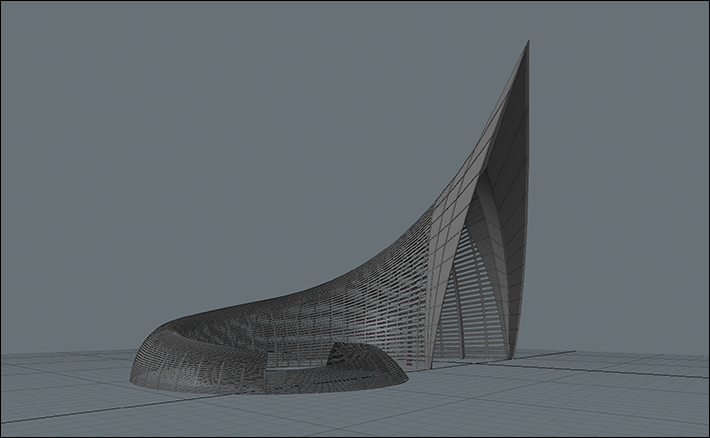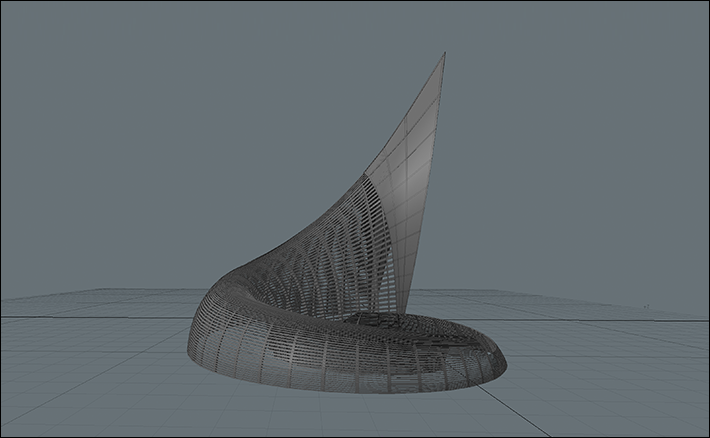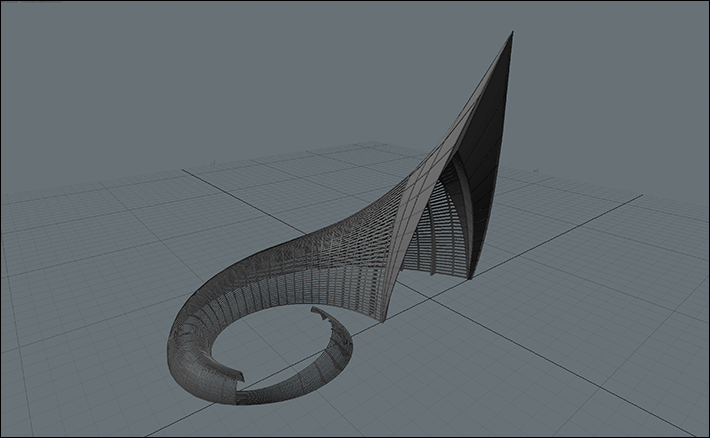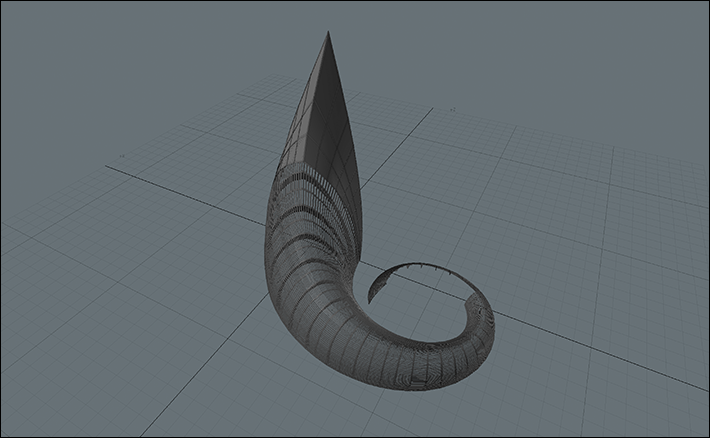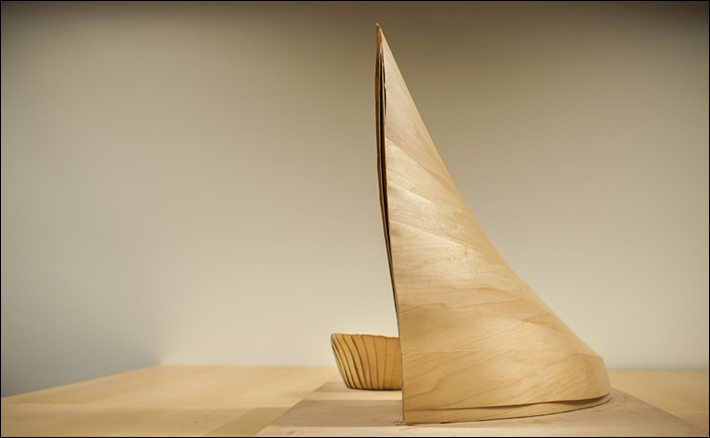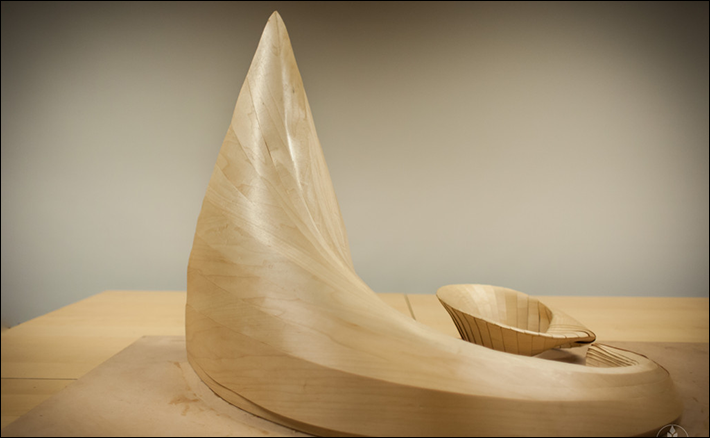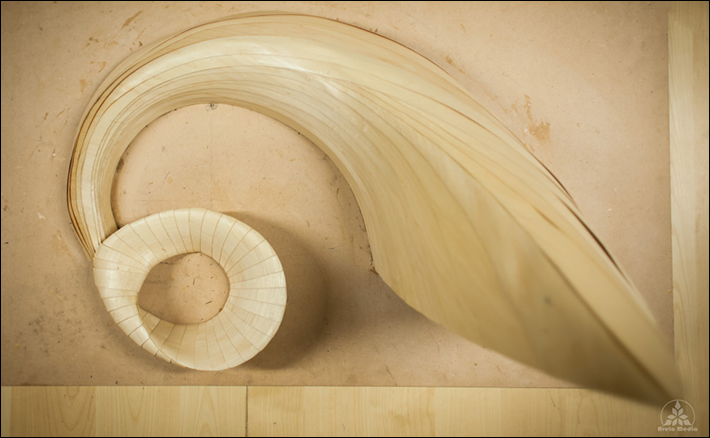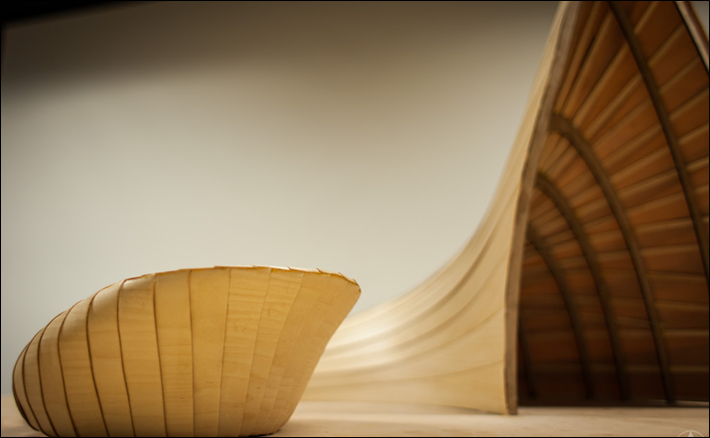The 2015 Model.
The Digital Model.As a designer, I’m always thinking about how I would approach a project and I often give myself hypothetical design briefs. When I first learned that the Temple at Burning Man was selected through an open submission process, the brief that came to mind was this: “Everyone at Burning Man is on some kind of journey. Design a Temple that extends that journey in a meaningful way.”
My response to that prompt was the idea of offering a transformative experience by way of a building that transforms as you move through it. The most straightforward transformation is to go from very large to very small. With that, the basic shape came almost instantly. It felt like pulling a nearly complete design from the void. I had a wax sculpture in about 15 minutes. Originally, the shape was symmetrical and stretched straight back. But no good journey follows a straight line so I curved the tail around until it followed the curve seen here.
The model with solid skin was submitted for consideration for the 2014 burn. I had no experience with burner art at the time and was hopelessly naive. When the proposal was rejected, the Burning Man Organization was kind enough to provide guidance on achieving success with playa art. I took that advice and continued to refine the design through several iterations, submitting the open skinned model for 2015. It was accepted.
For early development, I favor wax maquettes over sketches and do most of my development there. I love physical models and the fundamental shape was resolved there. A scan was taken from the physical model and served as the basis for the digital version. Several changes were made digitally and there was a period of iteration that went back and forth between the computer and physical models.
There were several key features of the final design:
The Temple as Journey
Unlike most of the Temples that came before, this structure has no clear central altar. While this broke with tradition and went against expectation, this was by design, forcing people who leave offerings and messages to find a space that speaks to them in a personal way rather than simply competing for proximity to a predefined center. The journey is given precedence over the destination.
The central concept of the piece was that the structure would diminish in size as you moved through it – moving from immense to human scale. When I originally conceived of the idea, I imagined a lone individual experiencing this passage. In reality, there was a steady flow of traffic and taking time to read messages that had been written on the walls meant that a typical walkthrough would take about 15 minutes. During this time, in addition to the ceiling sloping ever lower, you’d be gradually funneled closer and closer to the people you came in with. At the emergence point, where the tallest people would have to lean down, it was common for strangers to spontaneously embrace each other and share the moment together. The experience in reality actually exceeded my best expectations.
The Copper Spire
The entrance to the Temple is a massive tri-lobal truss clad in copper. This was the final major design revision and is absent from the 2014 submission. It came about from an idea that the project architect Dan Swain had to make all of the arches tri-lobal and similar to the St. Louis Arch. While that idea was abandoned, it inspired me to experiment with adding a front spire to what I’d previously been thinking about mostly in terms of a geometric surface shape. It became cantilevered when the front arch of one of the physical models accidentally tilted forward in an aesthetically pleasing way during assembly.
The Grove
You would emerge from the interior into an enclosed outdoor space known as the grove. Three steel sculptures of trees occupy the space at the beginning of the event they were completely bare of leaves. We provided strips of cloth that visitors could write messages on then secure to the tree branches. Over the course of the week, these leaves accumulated such that the trees took on a weeping willow appearance.
Perimeter Stones
Another feature that turned out better than expected. Since 2012, every Temple has featured a courtyard wall. The serves a utilitarian purpose of keeping art cars with loud sound systems at bay and preventing visitors from parking bikes directly against the side of the Temple. But a wall also means creating gates and a defined threshold for the experience. It also separates the Temple from its environment. Because of the organic, flowing shape of the design, I wanted this Temple to feel of the playa, as though it was a natural phenomenon emerging from the desert floor, echoing the mountains in the distance. A wall would undermine this effect.
Our solution was to create a soft perimeter of wooden “stones” of various sizes scattered in a pseudo random pattern. This allowed entry from every direction and the sense of being in a sacred space would come on gradually. Being among the stones would be like transitioning from plains to mountains by passing through foothills. Because the stones were crafted in a way that allowed them to be occupied, they became known as pods and in practice created a novel third space in the temple experience (after the interior and the grove). This space was unique in that people still felt they were at the Temple but they were far enough removed that they felt comfortable talking to each other normal voices instead of hushed tones. The social aspect of the pods was a very happy accident.
The 2014 Model.

